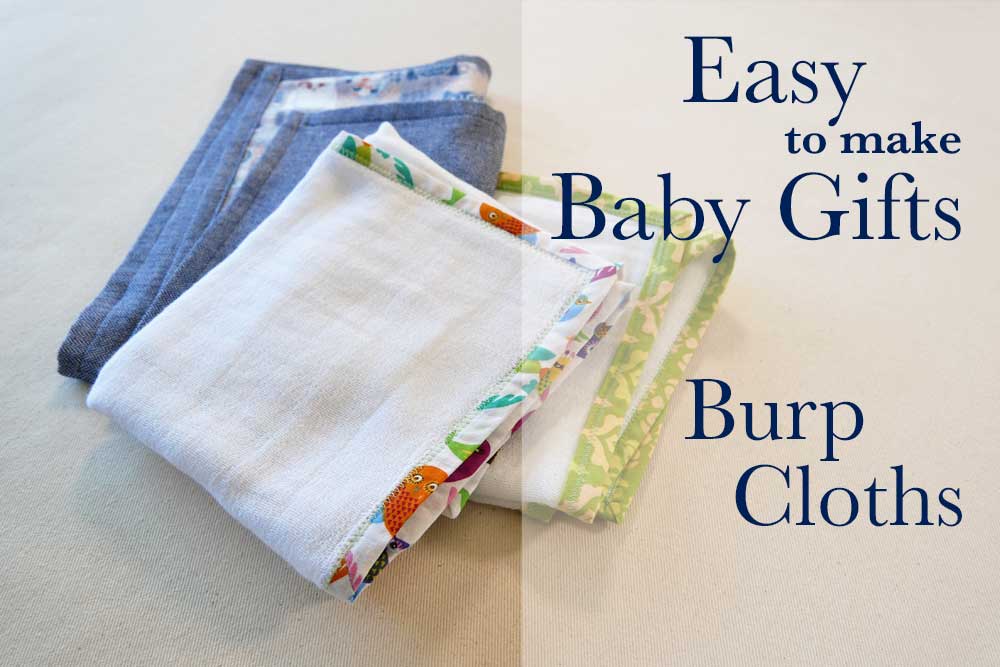
When choosing what gift to make expecting parents I never think of burp cloths. I mean, ick. But really, parents with babies use burp cloths all day long going through more than they thought possible.
So making good looking, functional burp cloths is a great idea. They’re easy and quick to make, a great project for scraps and certainly used by the receiver.
Burp cloths are essentially any cloth that can protect a shoulder, a lap, or any surface from Baby’s spit-up. Really, any cloth. So you can use pieces of fabric or items like cloth diapers, hand towels, dish towels, or repurposed t-shirts, flannel sheets and bath towels.
When making burp cloths select fabric that is soft and somewhat absorbent. Natural fibers are absorbent. Polyester & nylon are not. Also, you want a fabric that will stand up to frequent washings.
Burp cloths seem to be rectangular in shape. Large enough to drape over an adult’s shoulder to cover both a little of the front and a little of the back. I made mine 10″ wide by 20″ long. (26 x 52 cm)
There are four ways to go about making burp cloths (and surely more):
- Hem all four sides of a piece of fabric.
- Decorate or spruce up an already hemmed cloth. (cloth diapers, hand towels)
- Bind the edges of cloth diapers, terry cloth or thin fabric folded to be double-layered.
- Sew two pieces of fabric together.
Remember: No matter which method you use be sure to wash and dry all your fabrics, towels, diapers, etc. before you cut and sew them. Baby things need to be thrown into the washer frequently so wash it now to preshrink before you sew it together.
Hem
To hem a fabric simple fold it over to the backside a quarter inch and then again so the raw, cut edge is under the fold. Press this fold and sew it down in place using a straight or zig-zag stitch. (10″ x 20″ is a good size but not absolute)
A thick piece of fabric like terry cloth would be difficult to hem in this manner. Try instead to apply binding to the edges to cover the raw edge. (Read on for how to apply binding)
Decorate
Since edges are already finished on pre-folded cloth diapers and handtowels decorating them can mean anything from embroidery, stenciling, stitching rows of decorative machine stitches along the edge or edges, to appliqueing ribbon and or motifs from printed fabric.
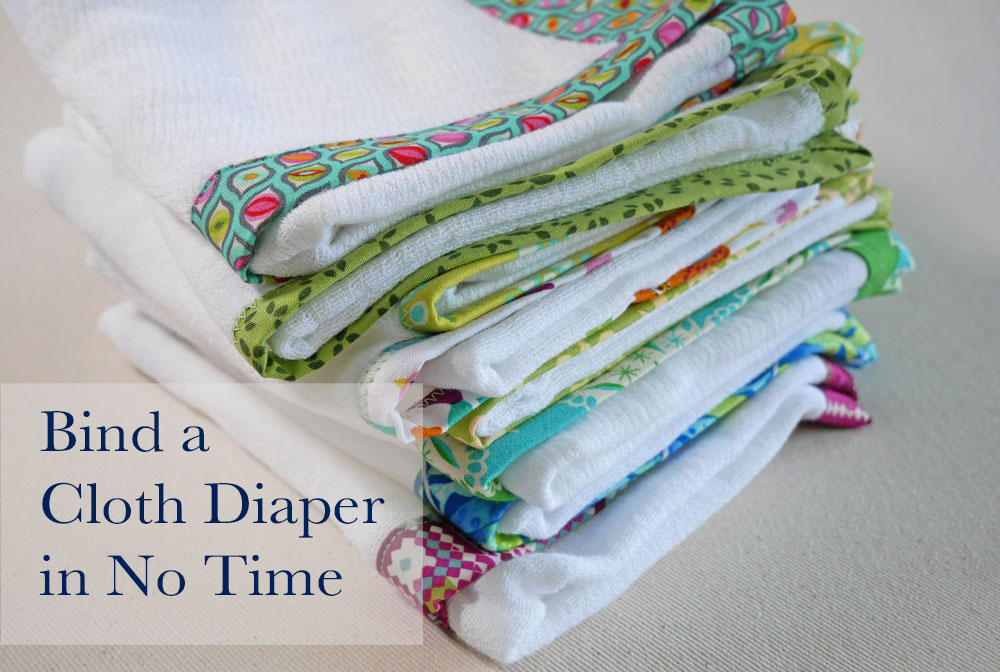
Bind
Colorful cotton binding around the edges of a cloth diaper (pre-folded or not), a piece of terrycloth or a double layer of soft fabric is decorative, practical and a great way to use up little bits of fun prints.
Make the Binding (this type is also used for quilts)
Measure around your burp cloth to determine how much binding you will need. Cut strips of fabric across the width or along the length of the fabric at least 1 1/2 inches wide. Two inches wide is nice too but work with what you have.
You want more binding than the edge that you need to cover. If my diaper measures 10″ x 20″ than it is 60″ all the way around. I want to cut out about 80″ of strips. You will cut multiple strips to equal what you need plus extra to connect all the pieces and turn corners on the item you are applying it too. You will not be cutting one long strip.
Sew the strips together with a diagonal seam to make one strip long enough to go around all the edges, plus 8 ” to 10″ to turn corners and connect back to itself.
Why do you sew the strips with a confusing diagonal seam instead of a straight forward line-up-the-edges-together seam? To reduce bulk. When you have the strip bound over the edge of another cloth you are sewing though at least three but probably five layers of fabric. Add seam allowance and that’s four to six layers. Seam allowance on both the top and back of the strip gets you up to possibly eight layers of fabric. That’s too much bulk. The diagonal seaming of the strip lets one layer of binding seam allowance be sewn before the second layer of seam allowance appears.
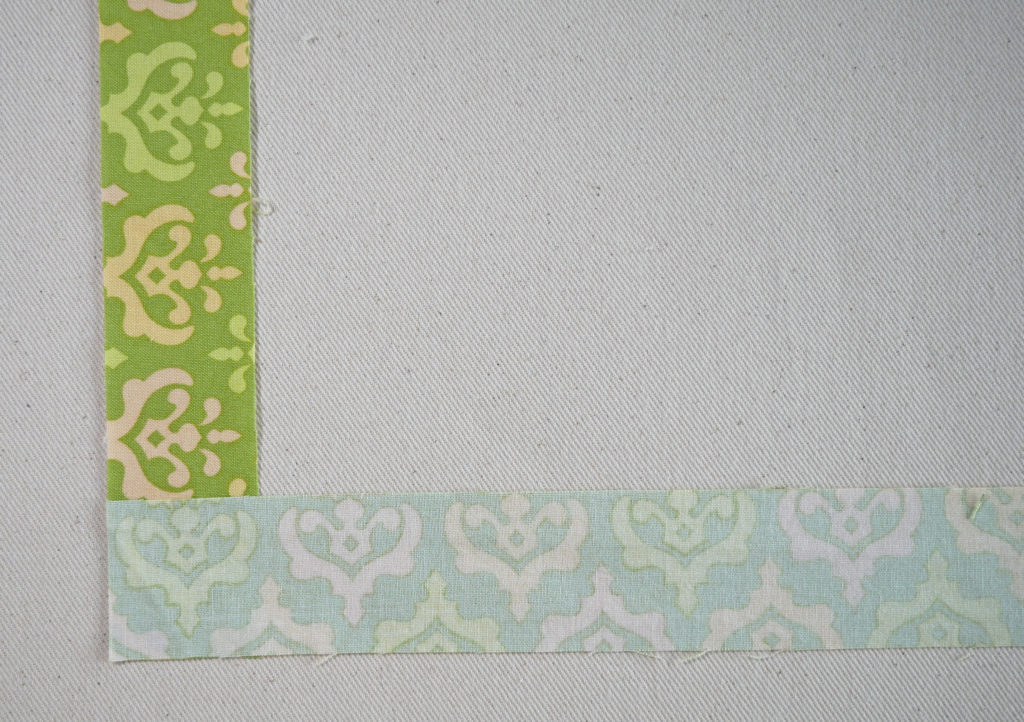
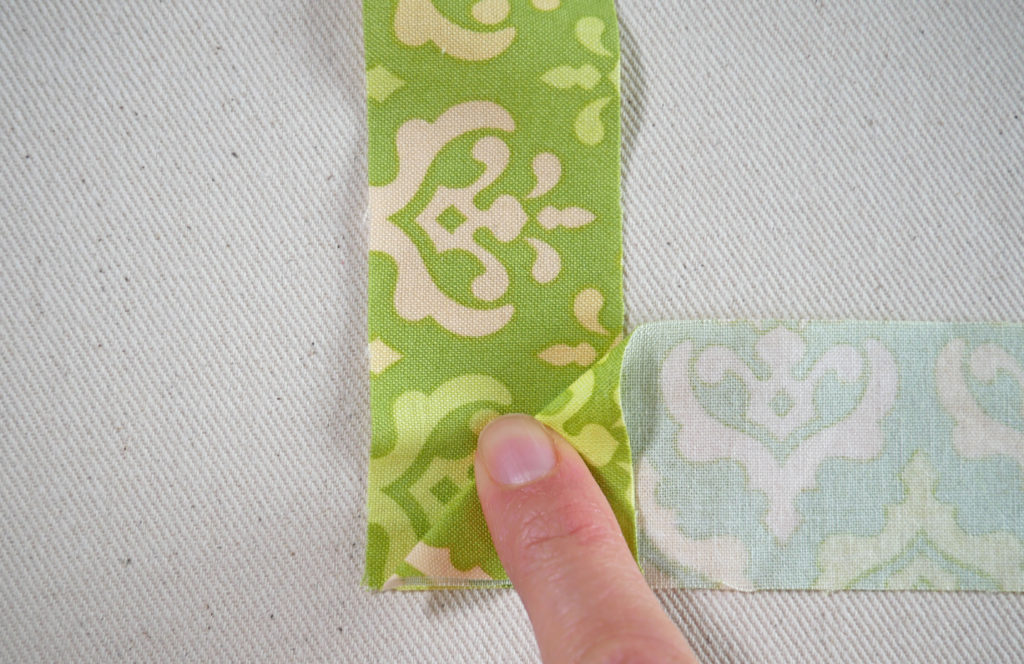
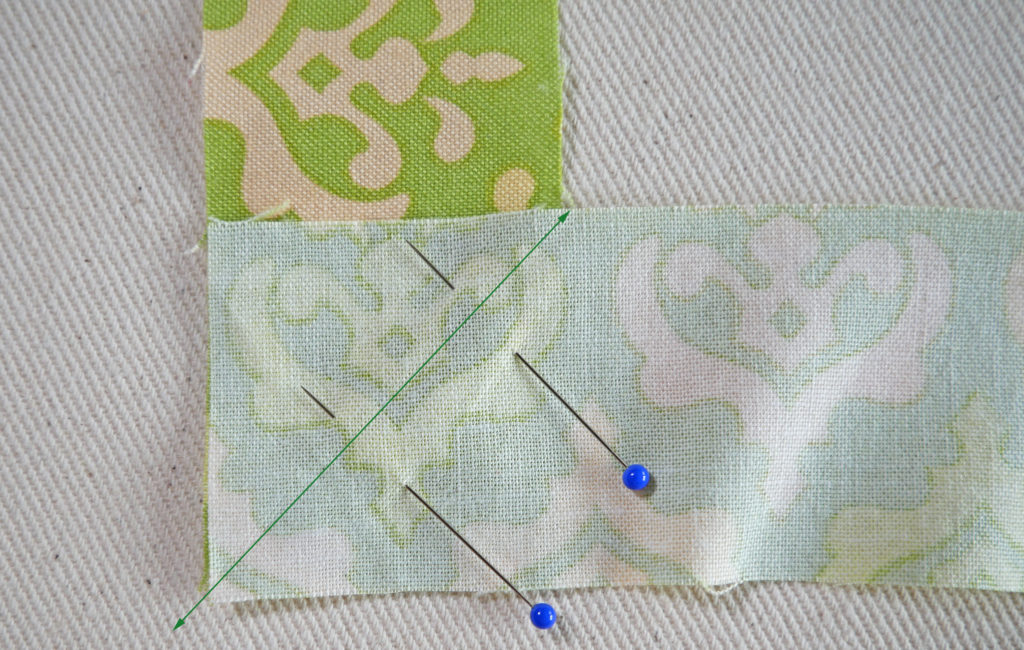
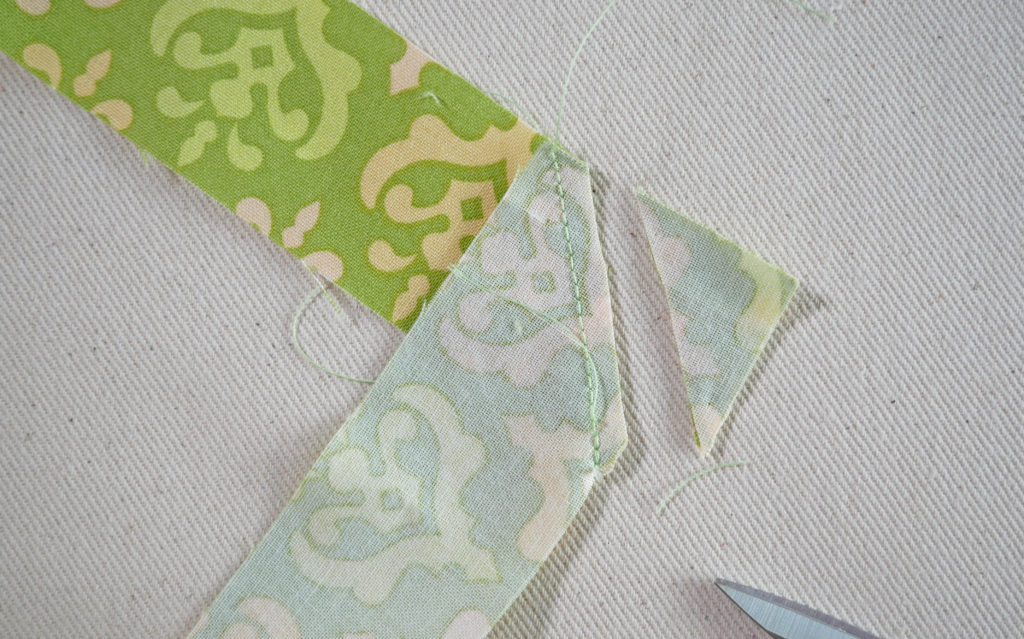
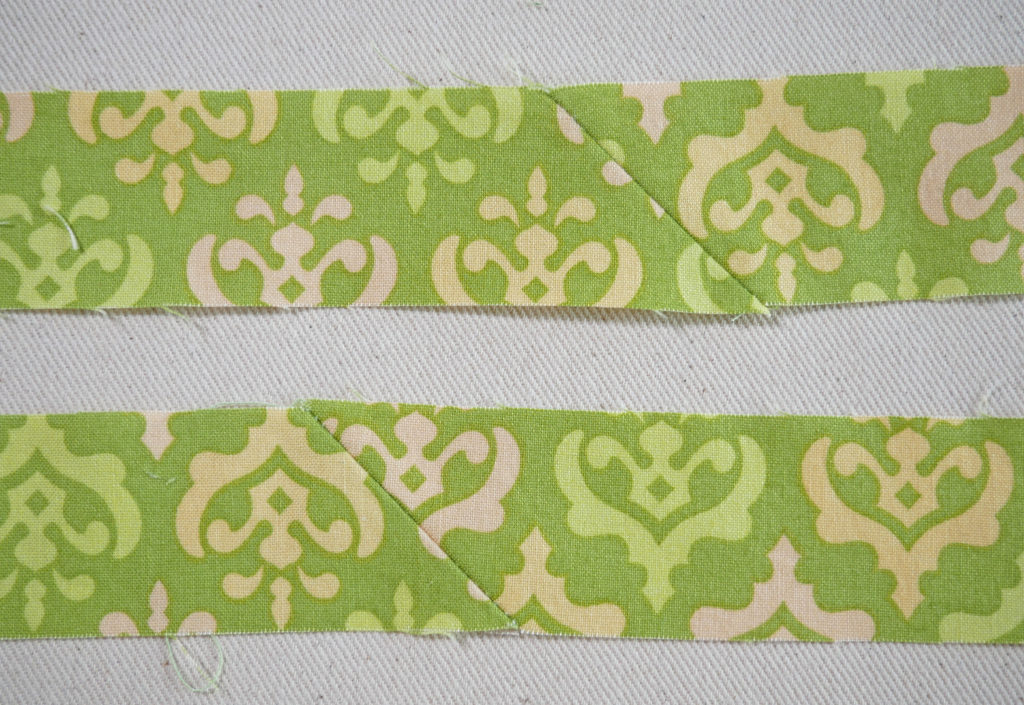
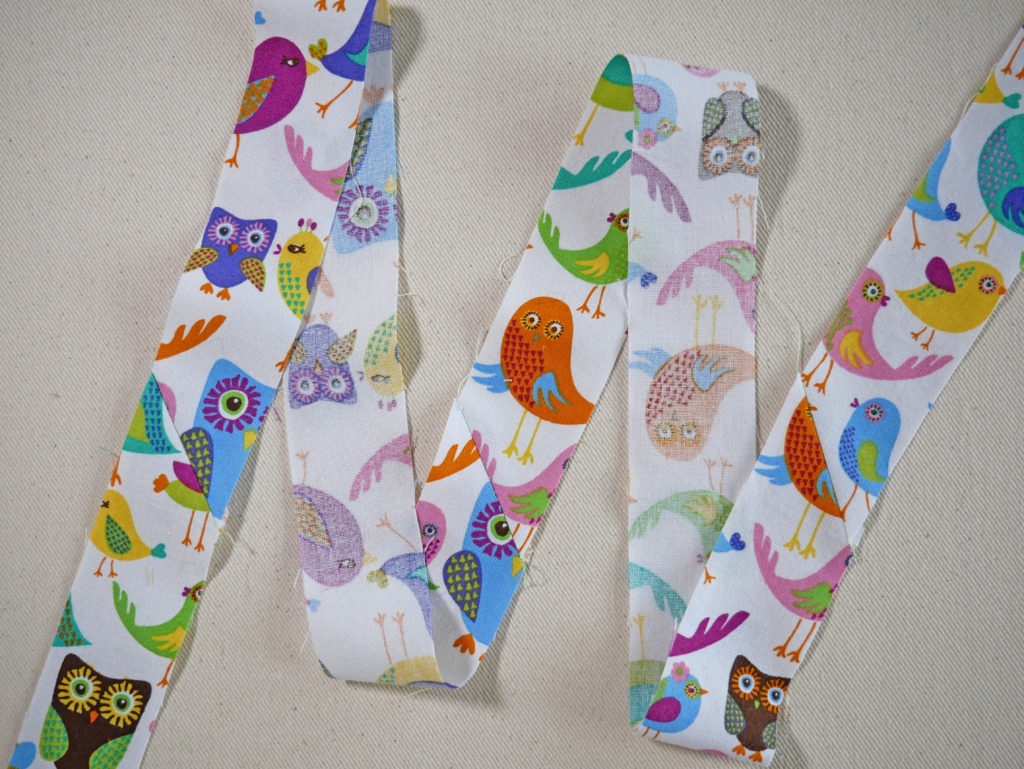
Attaching the Binding
Note if you are using an unfolded cloth diaper for your burp cloth:
An unfolded diaper is just a large rectangle of cotton gauze. Fold the diaper in half as I did or to the size you want the finished cloth to be and bind the layers as if it is one layer of fabric.

Place the binding right side down on any side of the diaper so the long edge of the binding is lined up with the edge of the diaper and the rest of the binding is laying on the diaper. (I’ll call it a diaper because this is what I used but you may have a piece of terry cloth or other fabric you are binding.) Start sewing the binding down about 4 -6 inches in from the end and near the middle of the diaper’s side.
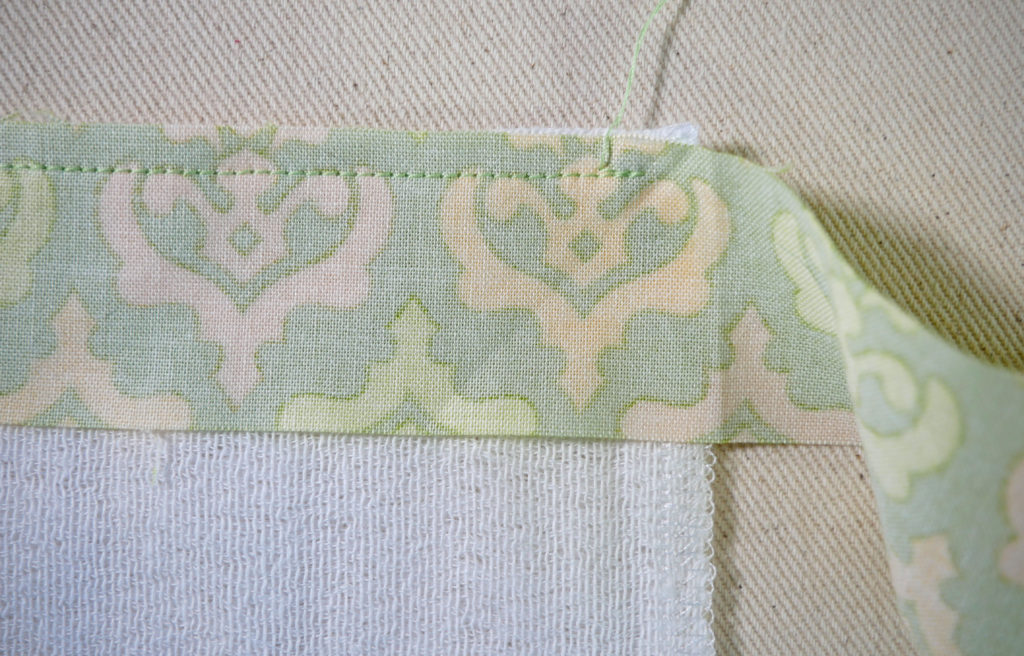
Sew the binding down along the edge. I used a 1/4 inch seam allowance.
Stop sewing 1/4 inch in from the end or corner. If you use a 1/2 seam allowance for a wider bound edge stop 1/2 inch in from the end. Stop the same distance from the end as your seam allowance.
Back tack ( a couple reverse stitches) and remove the diaper from under the needle and presser foot. You can clip threads or not. We’re just going to fold the corner and place it all back under the foot to sew the next edge.
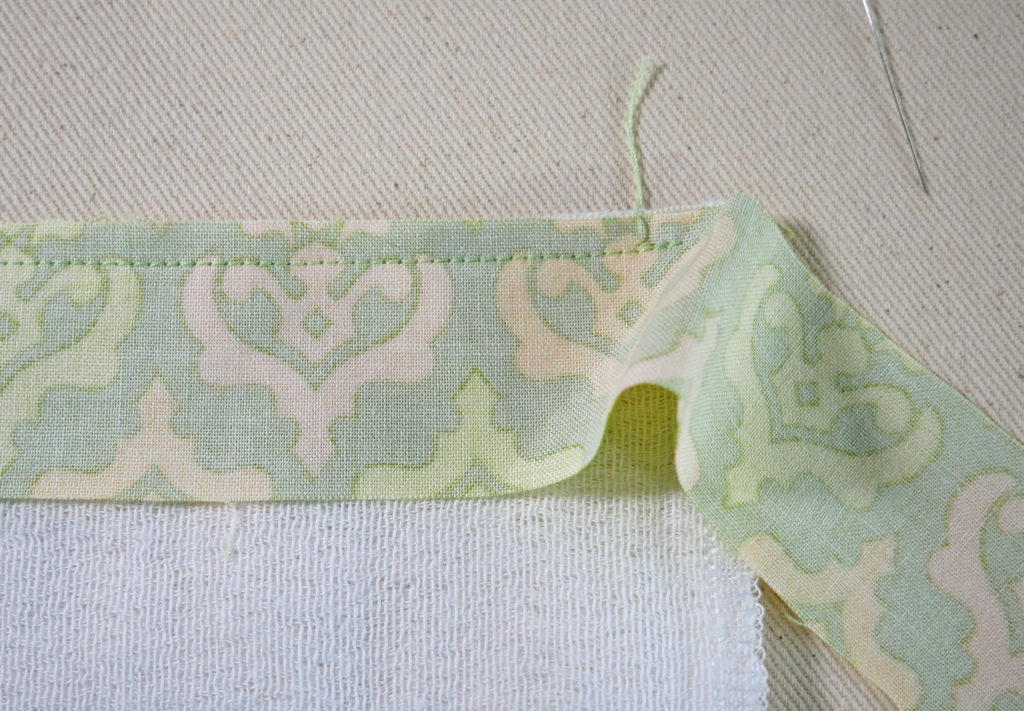
You want to bring the top edge of the binding to the edge of the next side of the diaper. The best way to do this is to miter the corner. It’s easier than it looks (I think it looks confusing). Just follow the photos.
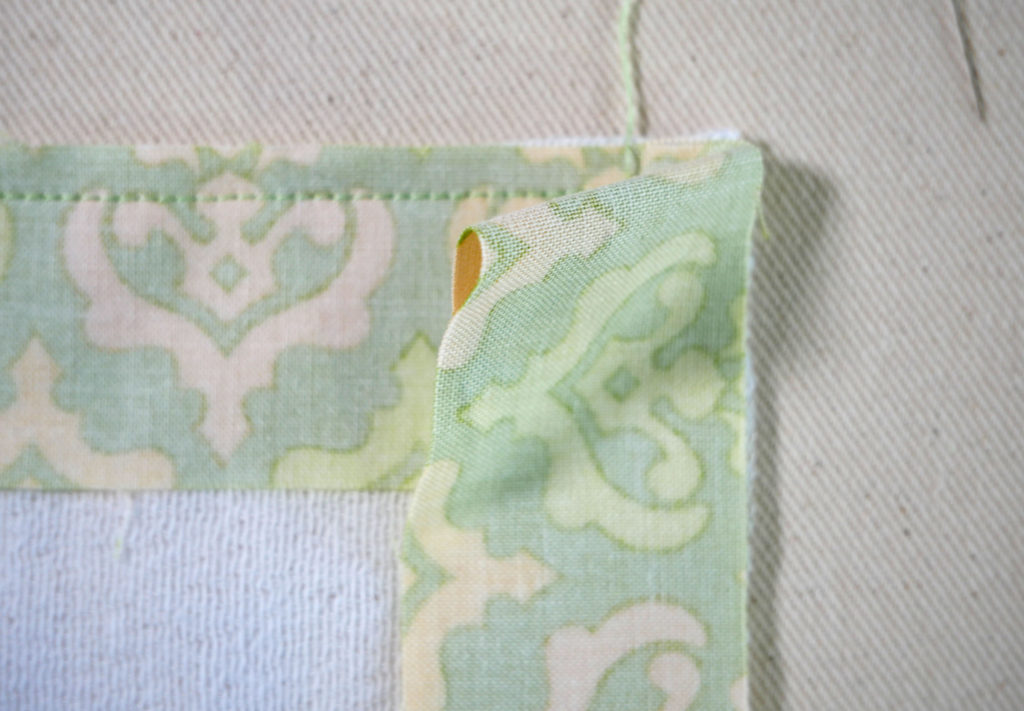
Pinch the binding while bringing the top edge of the binding to lay on the edge of the next side.
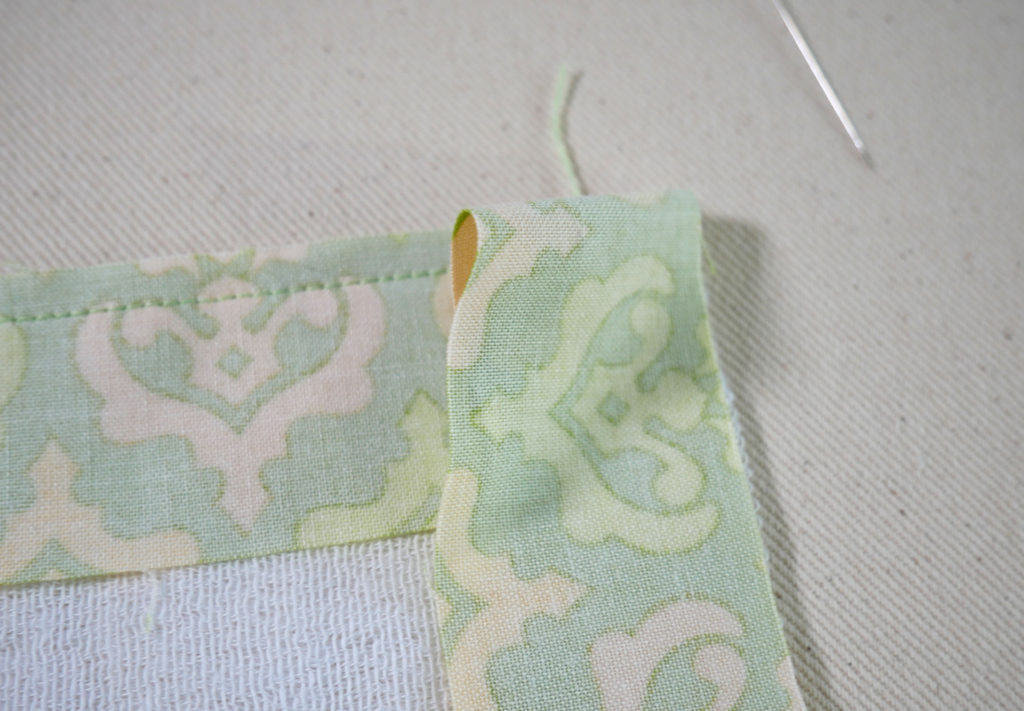
The excess binding you pinch out will lay so the fold is up against the side you just finished attaching and the extra fabric underneath forms a diagonal (roughly 45-degree) fold.
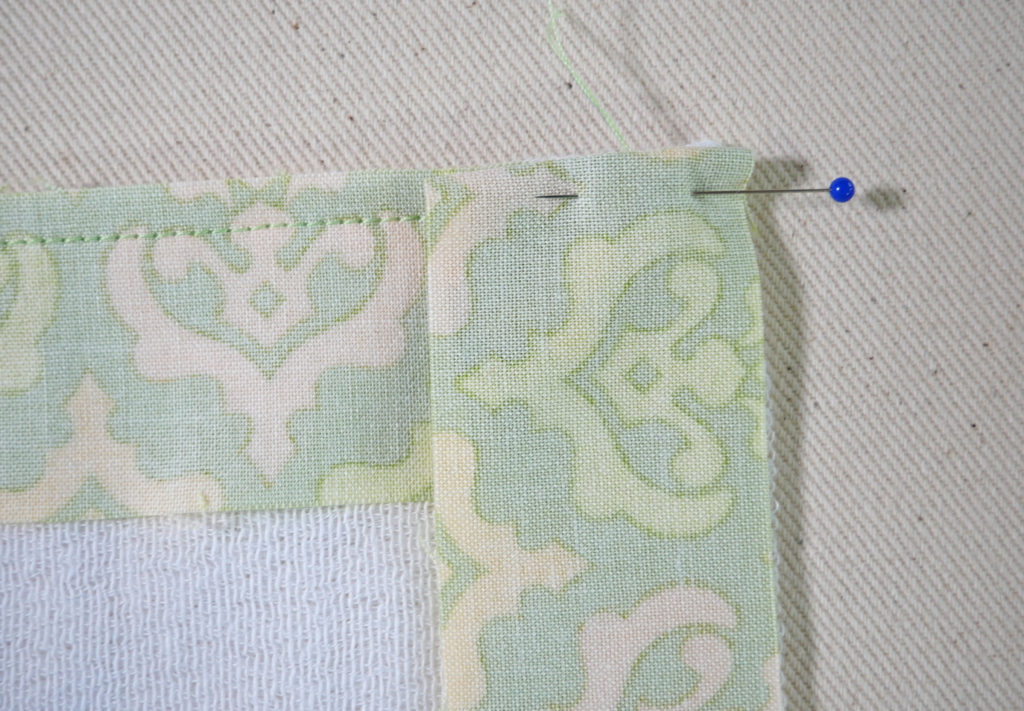
Pin the edge down if you are doing this fold away from your sewing machine. (When you get the hang of this you can fold the binding under the machine without even clipping the threads. You will need to remove the needle from the fabric and raise the pressure foot 😉
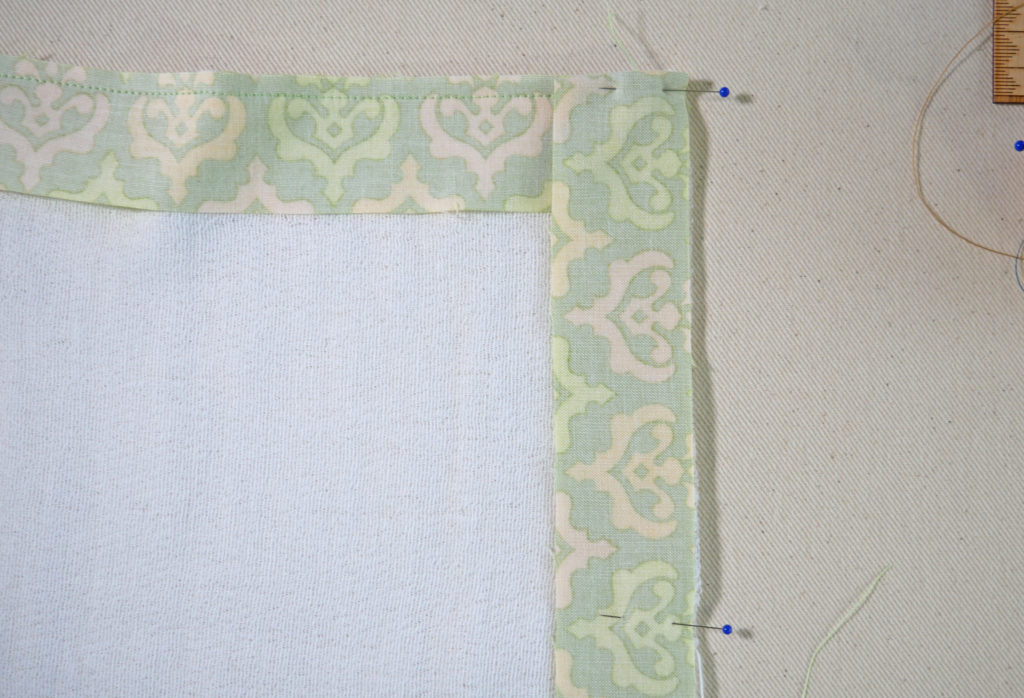
Sew down the next edge with the same seam allowance as your first. Stop the same distance as your seam allowance from the end. Back tack.
Fold the binding around the corner as you did before.
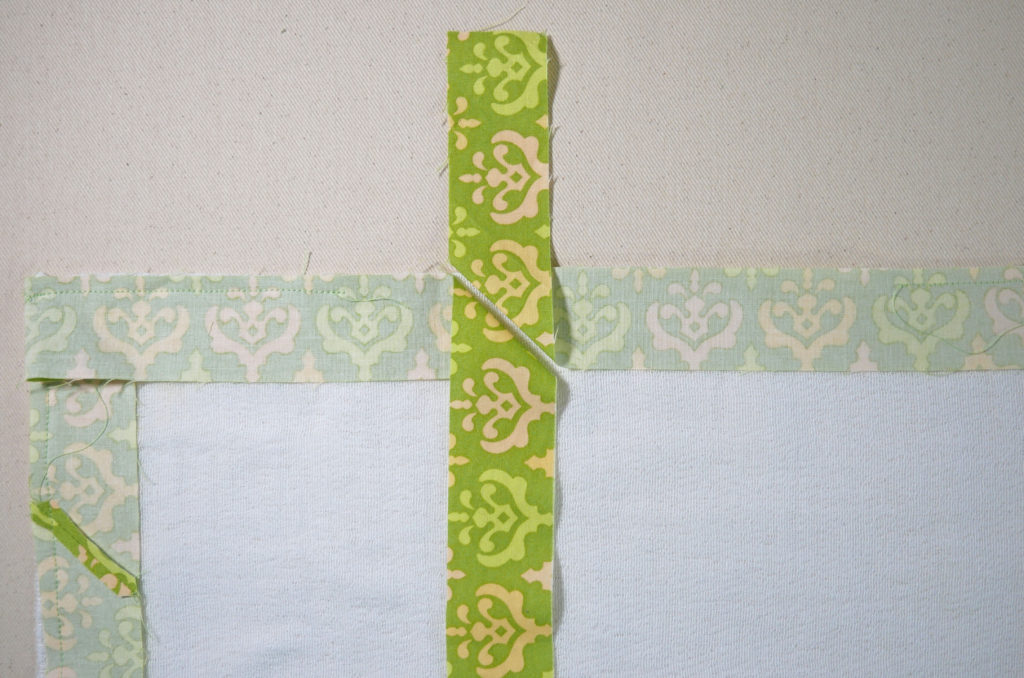
After you turn the last corner, stop sewing about six to eight inches before your starting stitches.
To join the bias ends together, flip one end up, folding it at a 45-degree angle. Having the loose end become perpendicular to the sewn down bias will form a 45-degree angle. And flip the other end down folding it the same way.
The two folds should line up against each other. Press the folds with your finger to make creases.
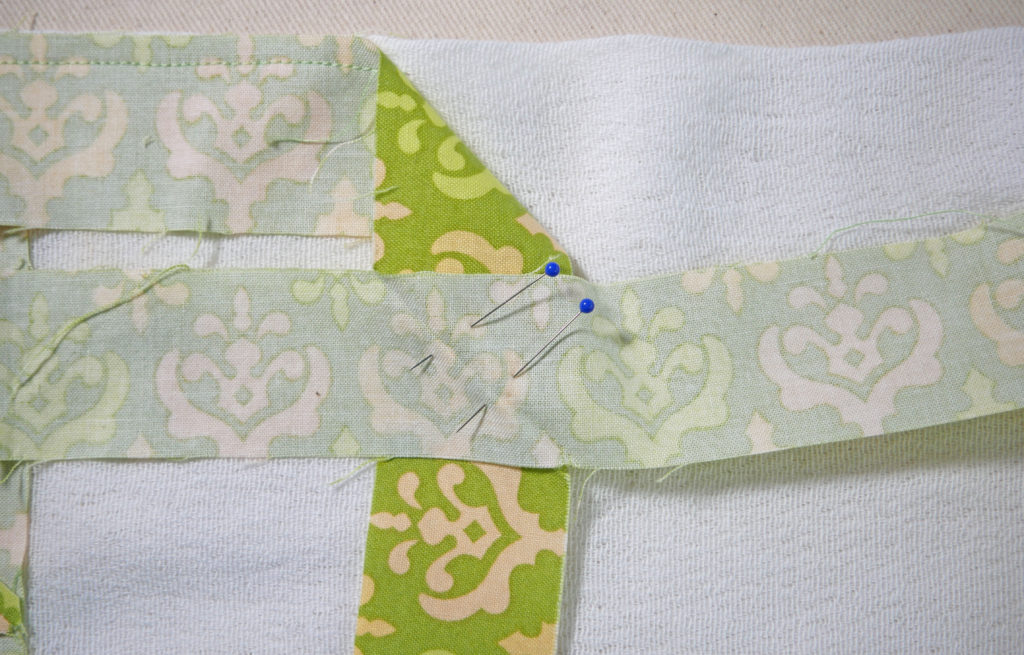
Lay the two ends right sides together and line up the creases. Pin the layers together across the crease. Sew on the crease to join the ends and make one continuous loop of binding.
Trim off the ends leaving a 1/4″ seam allowance. Press the seam allowance open.
Line up the unattached bit of binding to the diaper and sew it down. Press your stitching all around pressing the folds at the corners as well.
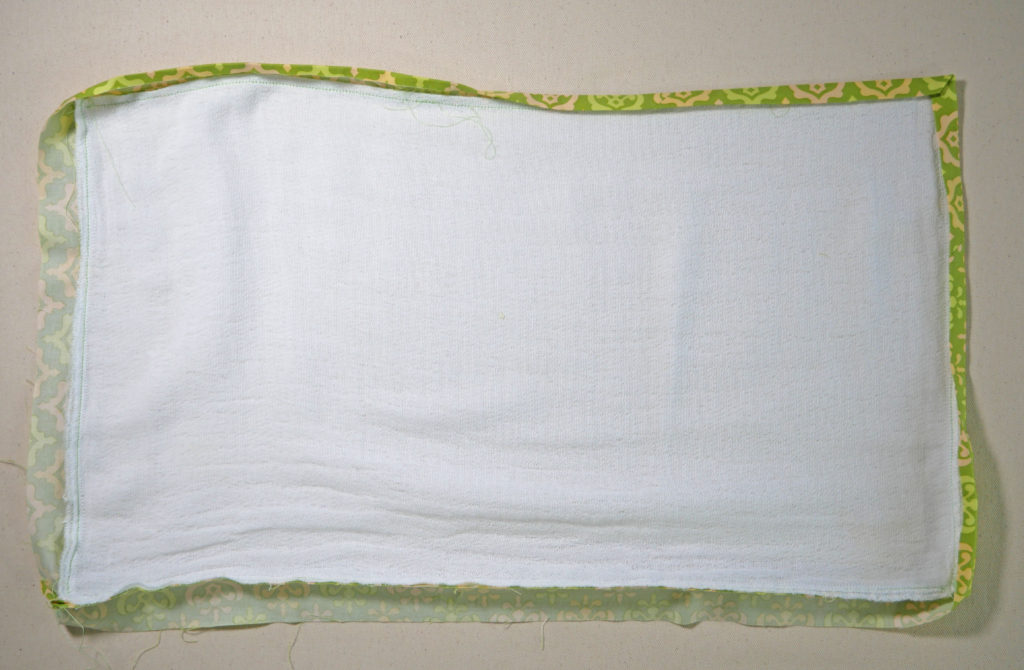
Flip the diaper over and bring the binding out from under the diaper. Fold a 1/4″ of the binding’s raw edge in onto itself. Press this as you go as best you can.
Fold the binding again this time over the edge of the diaper. You’re enclosing the edges of the diaper.
The corners are a little tricky to fold at first but you will find that it sort of folds on its own into place. It’s sort of opposite how you mitered the corner when attaching the binding. This time you tuck in the excess fabric to line up to the edge and the fold you see on top is diagonal.
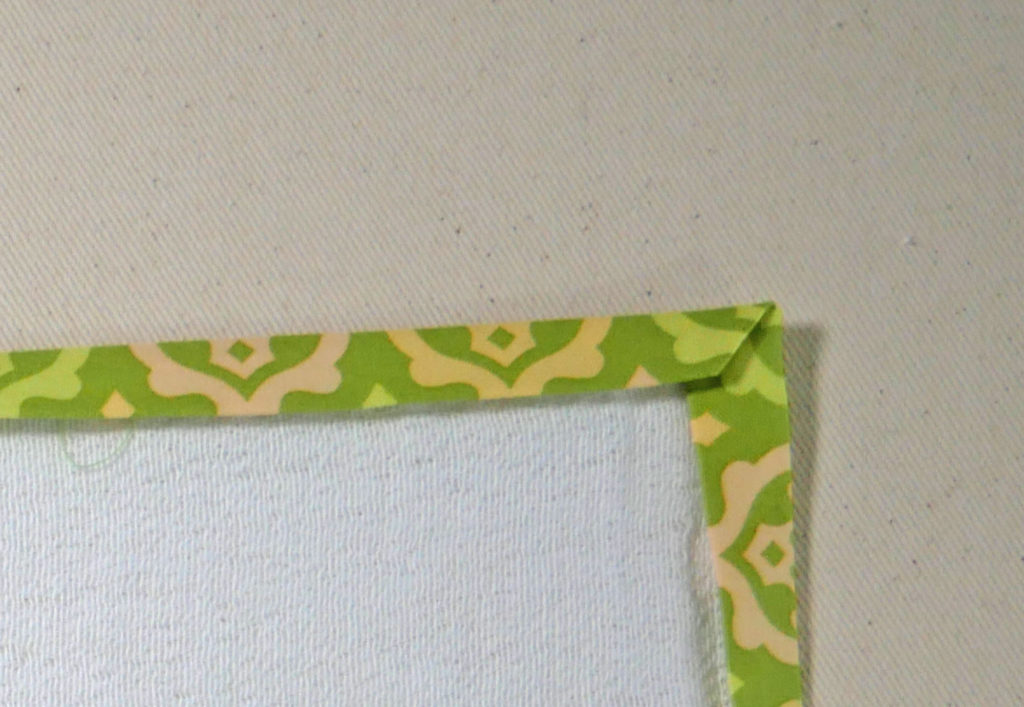
Press the fold as you are folding the binding down. You may want to pin down the folded binding at least at the corners.
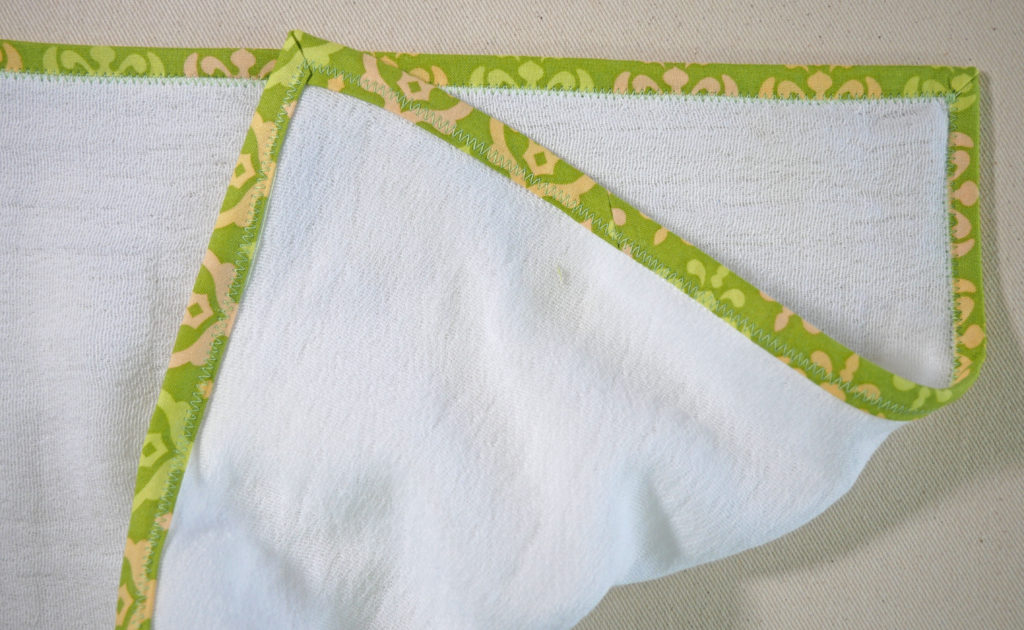
Sew down the folded edge with a straight stitch or a zig-zag stitch. I choose the zig-zag stitch to be sure I caught the edges because I wasn’t a perfectionist when I folded the binding over. It is a burb cloth. I didn’t feel the need to aim for perfection 😉 (Hey, pick your battles, right?)
After you sew down the binding give it a good pressing and you are done. Nice job!
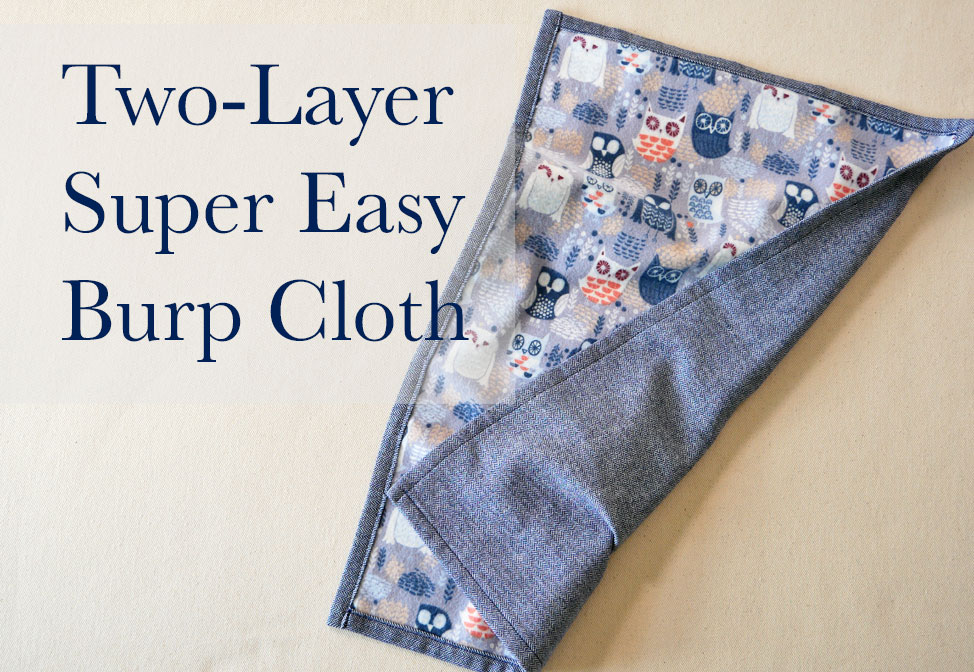
Two Pieces of Fabric
There are two ways to do this. I’m showing you the one I used here and the other method I will explain when I write the tutorial on how to make receiving blankets.
This is pretty darn easy and it’s the way I have made potholders and placemats through the years. It’s a great method when you have two different fabrics and therefor great for using up scraps.
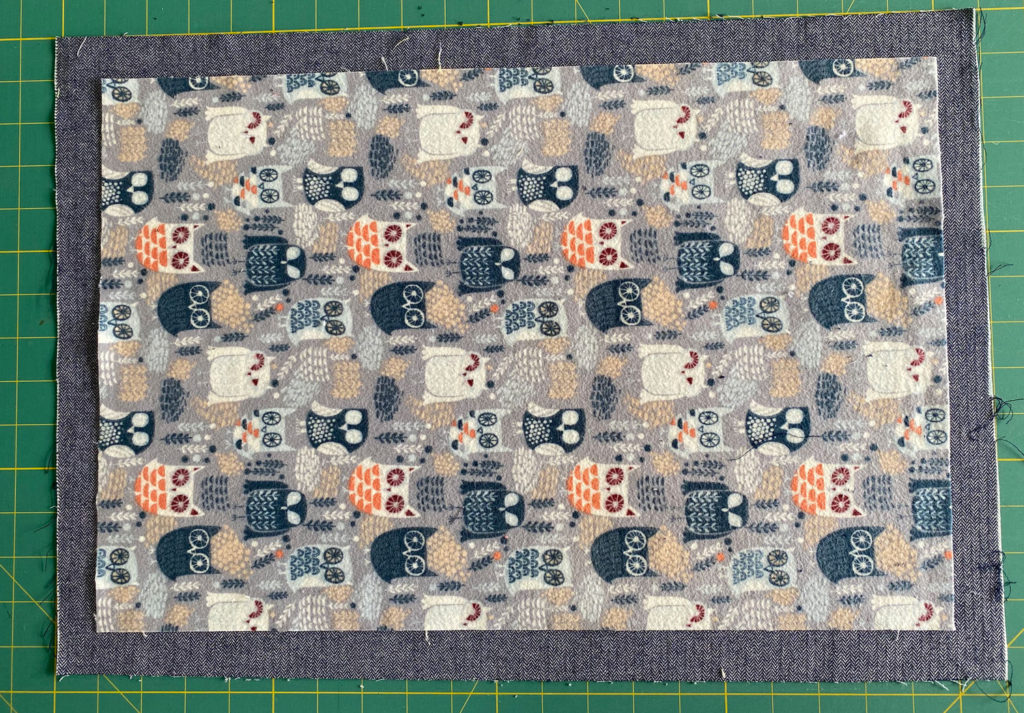
Cut one piece of fabric the size you want the finished cloth to be.
Cut the second piece (the back) two inches larger on all sides. The easy way here is to cut the first piece. Lay it on top of the second fabric. Cut out the second piece so it is one inch larger on all four sides than the first piece.
Place the two pieces wrong sides together with the top piece facing you and centered on the back. You want the back to extend one inch all around the top piece.
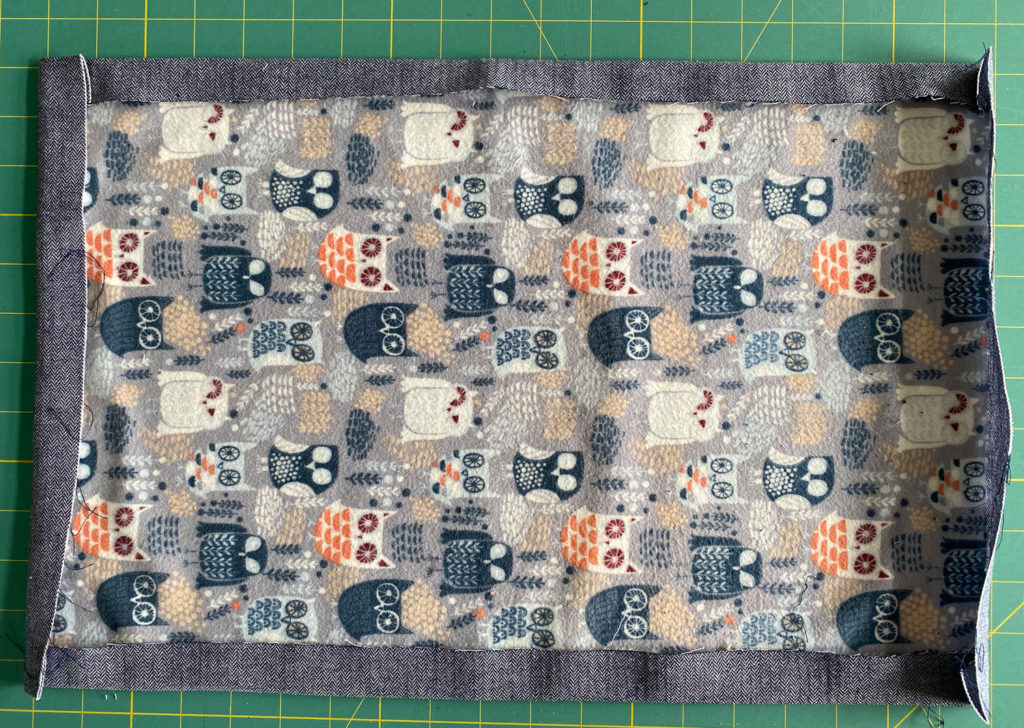
Fold the back over the front folding at the edges of the front piece. Press to get a crisp crease.
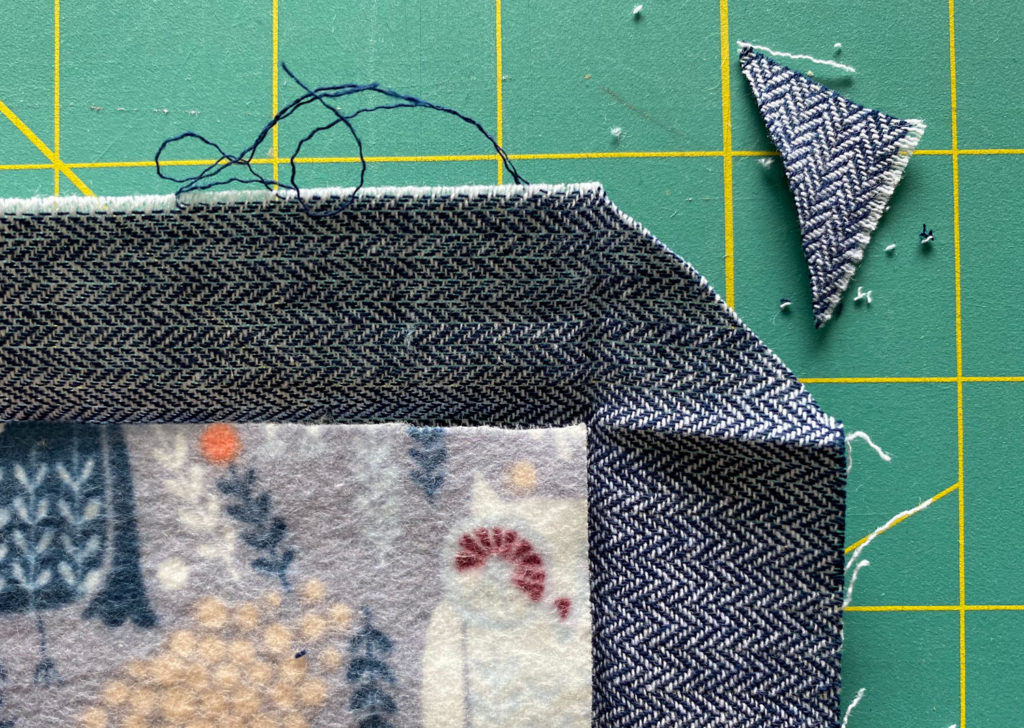
Unfold the back and trim across the corners to reduce bulk.
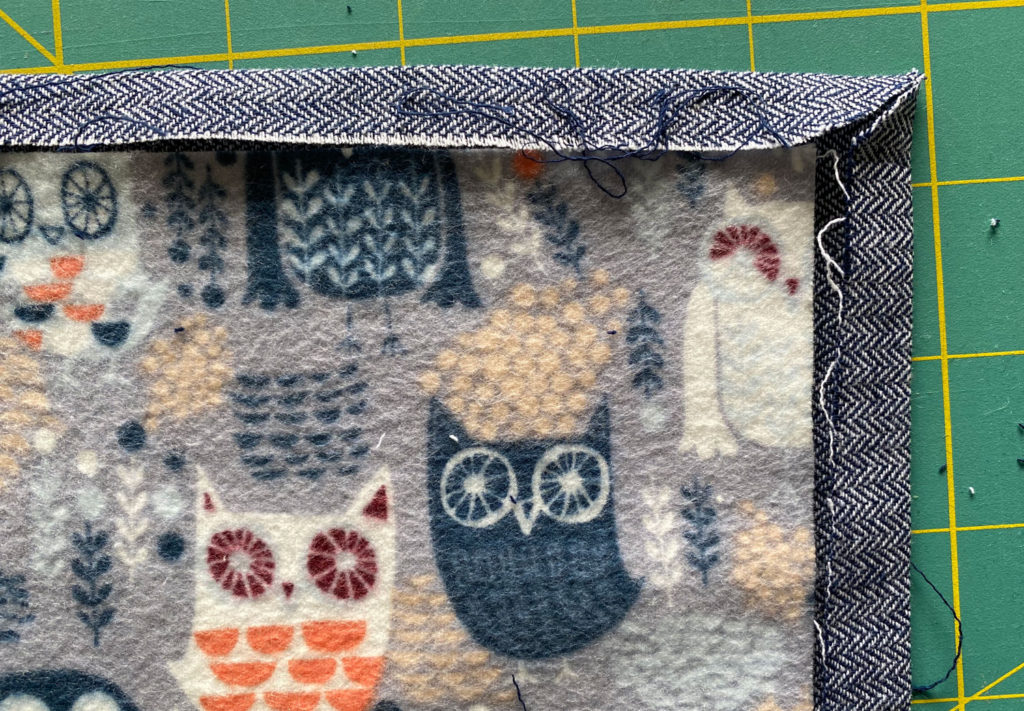
Fold the edges of the back piece in on itself, so the raw edges meet the crease which is also where the edges of the front piece are. Press.
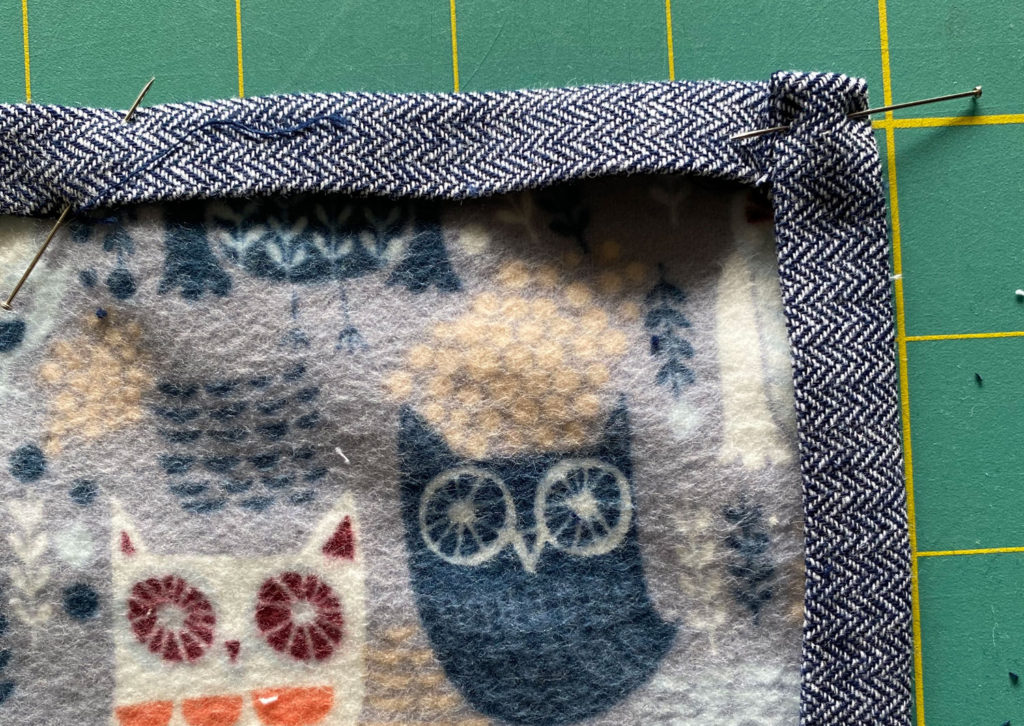
Fold the back piece over itself again and pin down.
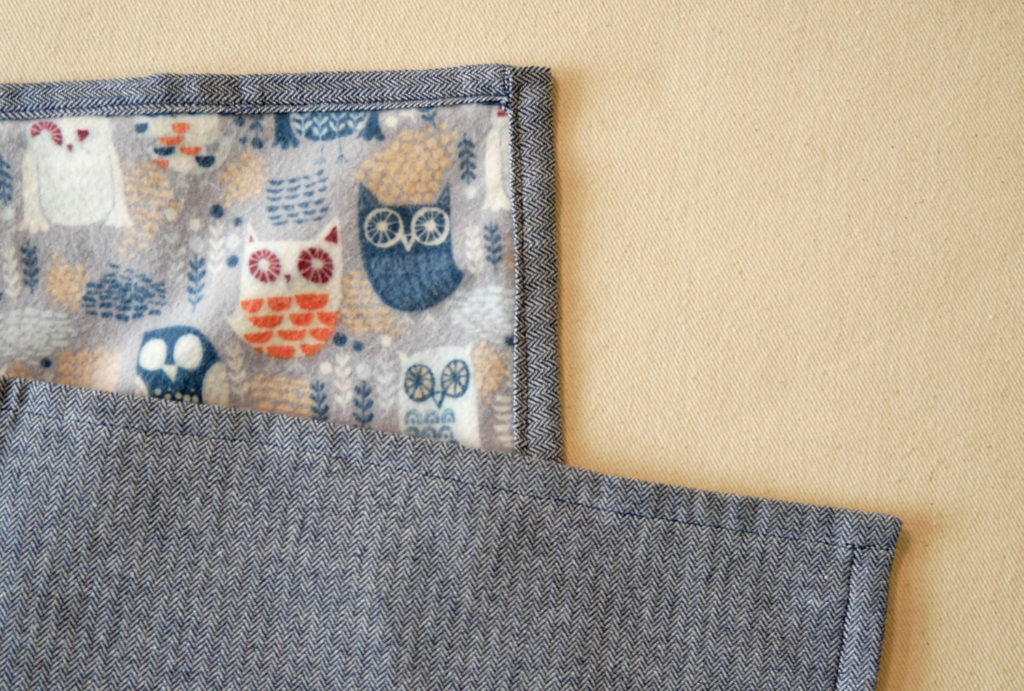
Sew down the back to the front close to the fold. If you get little puckers from your top fabric moving, press the seam in the opposite direction that you sewed it when you are done sewing. This will help shift the top layer back where it belongs.
I sewed the two short ends down first (unpinning the folds at the corner to sew only the short end down) Then I sewed the two long ends. You could sew it all at once turning at the corners.
Give your finished cloth a good pressing and you are done. Good work!
